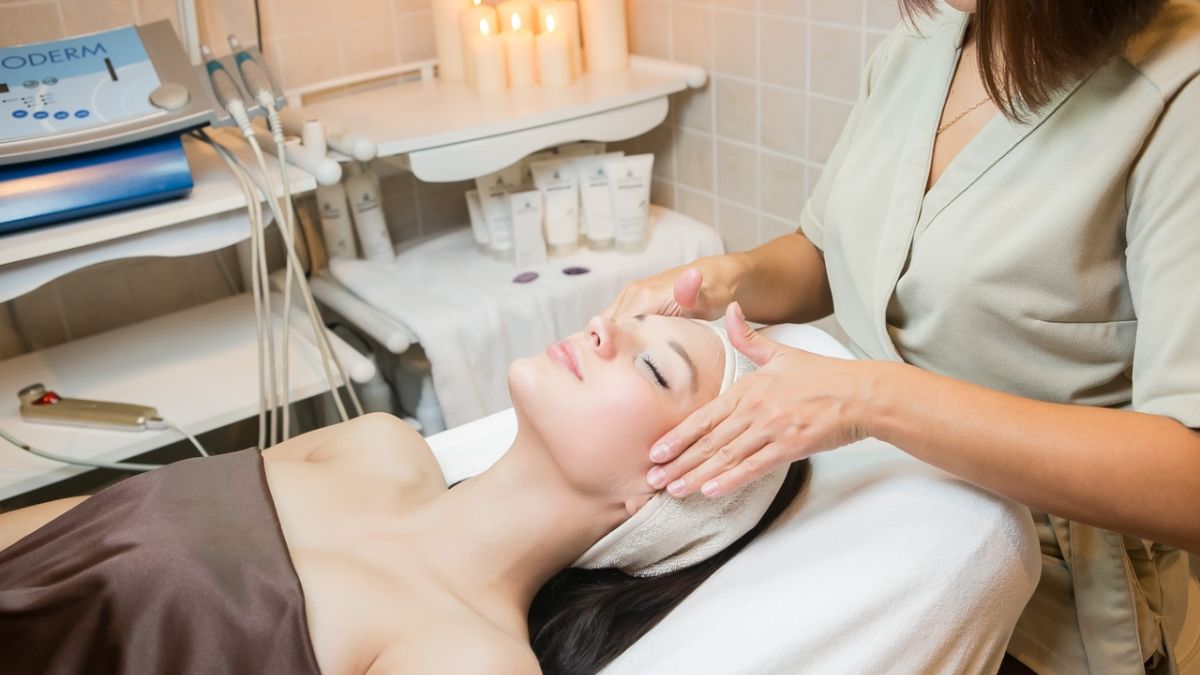Beauty therapists are essential in helping people keep their skin glowing and healthy. Their expertise in different skin types and diseases allows them to customize treatments to meet the specific requirements of every client. Effective skin care begins with a basic knowledge of skin types, and cosmetics professionals are educated to identify and treat a variety of skin categories, including combination, oily, dry, normal, and highly sensitive skin. This article examines the methods used by beauty therapists to treat various skin types to achieve the best possible outcomes. A beauty therapist uniform UK usually consists of an expertly tailored tunic and practical, comfortable trousers meant for ease of mobility during consultations while maintaining a polished, clean appearance.
What Kinds Of Skin Are There?
Normal Skin
Neither too dry nor too greasy is typical skin. It has healthy blood circulation and controlled sebum production.
Sebaceous Skin
Oily skin is easily identifiable by its oily look. This kind of complexion is more likely to break out in acne. Excess sebum production leads to oily skin.
Dry skin
The rough and flaky texture indicates dry skin. There are moments when it irritates and feels tight.
Skin Combination
Dry and oily skin types coexist alongside each other’s skin. Combination skin types typically have dry cheeks and an oily T-zone.
Delicate Skin
You might possess sensitive skin whenever you react badly to new items and your skin flushes when you eat spicy food.
Aesthetic Face Procedures for Various Skin Types
Use Of Micro Needles
The beauty industry is currently seeing a huge surge in popularity due to microneedling’s amazing ability to reshape. Numerous tiny, sterile needles are used to pierce the skin to induce tension. The needles’ stress promotes the development of new skin cells and boosts the synthesis of collagen.
The collagen generated will support skin that is more elastic and youthful-looking. Our skin might lose its natural suppleness due to a variety of skin issues, including stretch marks, acne, and aging.
Treatments For Chemical Peels And Skin Peeling
Applying a solution of chemicals to eliminate dead skin cells is the aesthetic facial procedure known as a chemical peel. Additionally, the therapy will promote the development of fresh cells in the skin. Your goal as an aesthetician is to make your client’s skin look better overall via a chemical peel.
There are three varieties of chemical peels on the market: medium, deep, and superficial. Since superficial as well as medium skin peels are simplest to perform and can be applied by a non-medical aesthetician, we shall limit our discussion to these types. The epidermis, or top layer of skin, is the objective of a superficial biochemical peel, whereas the top and medium layers of the skin are the targets of a medium chemical peel.
Skin Rejuvenation Using Laser
Laser renewal of the skin treatments will be the last aesthetic facial procedure we discuss in this blog. One resurfacing procedure is laser skin rejuvenation. By removing the damaged skin, the lasers promote your body’s natural healing process. This is without a doubt one of the most cutting-edge treatments non-medical subjects aestheticians can provide.
There are currently two well-liked options available and provided by top skin clinics across the nation. Whether ablative or non-ablative, the client’s choice will influence how long it takes them to recover.
Skincare For Typical Skin Types:
Normal skin types have a healthy mix of sensitivity, oil, and hydration. It isn’t very dry or oily.
Skincare regimen:
- Cleaning: To preserve the natural equilibrium of your skin, use a mild cleaner.
- Moisturizing: A moisturizing, lightweight moisturizer is effective.
- Protection from the sun: Wear sunscreen every day.
- Frequent Exfoliation: Exfoliate your skin 1-2 times each week to preserve its radiant health.
- Taking Care of Oily Skin
Features:
Excessive production of sebum gives oily skin its shine and makes it more prone to outbreaks of acne.
Skincare Plan:
- Cleaning: To eliminate extra oil without drying out your skin too much, use a foamy or gel-based cleanser.
- Oil-Free Moisturizers: Use oil-free products to hydrate your skin.
- Blotting papers: Very useful for controlling glare all day.
Test Of The Blotting Sheet
You may also find out your skin type at home with the blotting sheet test. The only drawback to this procedure is that you might need to buy blotting sheets for it, unlike when you use your existing cleansers (like with the bare-faced test).
- Press an uncontaminated blotting sheet firmly against various parts of your skin to conduct your wiping sheet test at home. Focus particularly on the primary “problem” areas, such as the chin, nose, forehead, and cheeks.
- Check the amount of oil on the sheet by holding it up to an illuminated object or even the torch on your phone after each blot.
Final Words:
To deliver efficient and customized treatments, beauty therapists must have a thorough understanding of the subtle differences between various skin types. We can optimize our clients’ skincare outcomes and improve their entire experience by precisely determining their skin types and customizing treatments to match their unique needs and issues.

